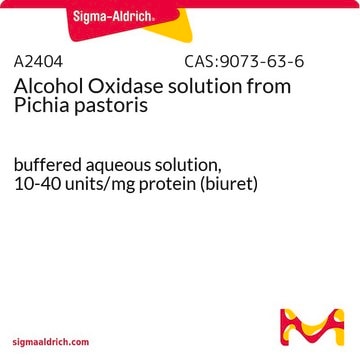F5152
D-Fructose Dehydrogenase from Gluconobacter industrius
lyophilized powder, 400-1,200 units/mg protein
Synonym(s):
D-Fructose:(acceptor) 5-oxidoreductase
About This Item
Recommended Products
form
lyophilized powder
Quality Level
specific activity
400-1,200 units/mg protein
mol wt
140 kDa
composition
Protein, ≤10% Lowry
shipped in
wet ice
storage temp.
−20°C
Looking for similar products? Visit Product Comparison Guide
Application
Biochem/physiol Actions
Unit Definition
Physical form
Storage Class Code
11 - Combustible Solids
WGK
WGK 3
Flash Point(F)
Not applicable
Flash Point(C)
Not applicable
Personal Protective Equipment
Choose from one of the most recent versions:
Already Own This Product?
Find documentation for the products that you have recently purchased in the Document Library.
Active Filters
Our team of scientists has experience in all areas of research including Life Science, Material Science, Chemical Synthesis, Chromatography, Analytical and many others.
Contact Technical Service






